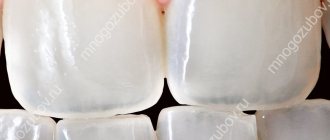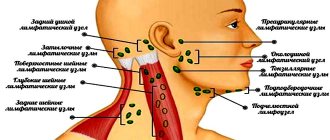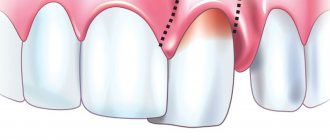What is a tax deduction for treatment?
According to the legislation of the Russian Federation (Article 219 of the Tax Code of the Russian Federation), when paying for treatment or medications, you can count on a tax deduction and return part of the money spent on treatment .
A tax deduction is the portion of income that is not subject to tax. Therefore, you can return the tax paid on the expenses incurred for treatment. If you officially work and pay income tax, have paid for your treatment or the treatment of your relatives , you can get back part of the money in the amount of up to 13% of the cost of treatment .
In what cases can you get a tax deduction for treatment?
You can take advantage of the social tax deduction for treatment and get part of your expenses back in the following cases:
- You can get a tax deduction when paying for medical services, If:
- paid for services for their own treatment or treatment of close relatives (spouse, parents, children under 18 years of age) provided by medical institutions in Russia;
- paid services are included in a special list of medical services for which a deduction is provided. The list of services is defined in Decree of the Government of the Russian Federation dated March 19, 2001 N 201.
- the treatment was carried out in a medical institution licensed to carry out medical activities;
- You can get a tax deduction when paying for medicines, If:
- paid at their own expense for medications for themselves or their immediate relatives (spouse, parents, children under 18 years of age) prescribed by the attending physician.
- You can get a tax deduction when paying for voluntary health insurance, If:
- paid insurance premiums under a voluntary health insurance agreement or insurance for immediate relatives (spouse, parents, children under 18 years of age);
- the insurance contract only provides for payment for treatment services;
- the insurance organization with which the voluntary insurance agreement has been concluded has a license to conduct the corresponding type of activity.
Recipe (form 107/1-у)
This small piece of paper will be required by the deductible applicant if the money was spent on medications that were prescribed by a doctor. The prescription is issued by the attending physician simultaneously with a similar form for the pharmacy. If form 107/1-у is missing, it can be obtained later from a medical institution based on the entries in the medical record.
The prescription must be stamped: “For the tax authorities of the Russian Federation, Taxpayer INN.” The stamp is also required after the cancellation of the medicinal list (see letter of the Ministry of Health dated December 30, 2019 No. 25-1/3144694-13771).
You can claim a deduction for the amount of paid medications for periods starting from 2019 for any medications prescribed by a doctor. But deductions for past periods can only be obtained if the purchased medications are included in the list approved by Resolution No. 201.
Tax officials must provide the original prescription and certified copies of payment documents. In this case, their presence is mandatory.
Amount of tax deduction for treatment
The amount of tax deduction for treatment is calculated for the calendar year and is determined by the following factors:
- You cannot return more money than you transferred to the income tax budget (about 13% of the official salary).
- You can return up to 13% of the cost of paid treatment/medicines , but not more than 15,600 rubles . This is due to the restriction on the maximum deduction amount of 120 thousand rubles (120 thousand rubles * 13% = 15,600 rubles). The limit of 15,600 rubles applies not only to deductions for treatment, but to all social deductions. The amount of all social deductions (training, treatment, pension contributions) should not exceed 120 thousand rubles. You can return a maximum of 15,600 rubles for all deductions).
- There is a certain list of expensive medical services to which the limit of 15,600 rubles does not apply . You can receive a tax deduction and get 13% back on the full cost of such services in addition to all other social deductions. The full list of expensive services is defined in Decree of the Government of the Russian Federation of March 19, 2001 N 201. You can find it here: List of expensive types of treatment
Example : In 2021 Ivanov A.A. paid for a course of dental treatment worth 140 thousand rubles and a paid operation related to expensive treatment costing 200 thousand rubles. At the same time, in 2021 he earned 500 thousand rubles and paid income tax of 62 thousand rubles.
Since dental treatment is not an expensive treatment, the maximum tax deduction for it is 120 thousand rubles (which is less than 140 thousand rubles). Since the operation of Ivanov A.A. refers to expensive types of treatment, there are no restrictions on tax deductions for it.
Total in 2021 for 2021 Ivanov A.A. will be able to return to himself (120 thousand rubles + 200 thousand rubles) * 13% = 41,600 rubles. So Ivanov A.A. paid taxes more than 41,600 rubles, he will be able to return the entire amount.
Additional and more complex examples of calculating a tax deduction for treatment can be found here: Examples of calculating a tax deduction for treatment
Another option for receiving compensation is through your employer.
We told you how to apply for a tax deduction for dental implants. But as for receiving a refund, since 2016[2] this can be done through the employer. True, then you will not see the entire amount due at once, but will receive it in parts. How? It’s just that they won’t withhold personal income tax from your salary and you can receive 13% more until the limit assigned to you for the amount is exhausted.
It is best to find out how to obtain a tax deduction for dental implantation through an employer in each specific organization. Usually such issues are resolved by accounting.
The process of obtaining a deduction for treatment
The process of obtaining a deduction for treatment consists of collecting and submitting documents to the tax office, checking the documents by the tax office and transferring money. You can learn more about the process of obtaining a tax deduction, indicating the deadlines, here: The process of obtaining a tax deduction for treatment.
The process of obtaining a deduction can be simplified by using our service. We will fill out the 3-NDFL declaration for you, tell you what other documents you will need for the deduction, and also give detailed instructions on submitting documents to the tax authorities. Or we will send your documents ourselves, without your participation. If you have any questions while working with the service, tax experts will be happy to advise you.
How to fill out 3-NDFL for a tax refund for 2021?
To return personal income tax on dental treatment expenses, you need to fill out a tax return 3-NDFL and submit it to the Federal Tax Service either on paper or electronically through the taxpayer’s personal account. It is the latter option that individuals have most often used lately.
You can log into your personal account using your Taxpayer Identification Number (TIN) and password, or through your government services account. The declaration can be filled out directly in your personal account, or you can prepare it separately, and then upload the finished version in your account for the Federal Tax Service.
The 3-NDFL declaration can be downloaded from the link below in excel format or filled out in the special program Declaration 2021. Instructions for preparing 3-NDFL in the program for deductions for treatment.
When filling it out yourself without using a program or personal account, it is important to make sure that the form is up to date. In 2021, you need to fill out the 3-NDFL form, approved by Federal Tax Service Order No. ED-7-11 / [email protected] dated 08/28/2020.
The following must be attached to the 3-NDFL:
- contract for the provision of dental services;
- payment documents;
- TIN;
- passport.
The declaration form should be filled in:
- The title page is the first page that displays information about the reporting period, the taxpayer and the declaration;
- section 1 - is filled out on the basis of section 2 as one of the last, when all calculations have been made - shows the amount that the Federal Tax Service will have to return to the taxpayer in connection with the costs of dental treatment;
- appendix to section 1 - an application for a tax refund is generated, here you need to indicate the amount to be returned and the payment details to which the funds will need to be transferred; there is no need to prepare a separate application;
- section 2 - calculation of personal income tax for refund is carried out based on data on taxable income, withheld personal income tax and data on dental treatment expenses;
- Appendix 1 - shows income for the reporting year and personal income tax withheld from it, as well as information about the source of this income. If there were several sources, then data for each is shown separately;
- Appendix 5 - the required deduction is calculated - expenses for dental treatment, medications and expensive dentistry (prosthetics, implantation) are reflected separately, then all expenses are summed up.
Detailed completion of sections of the declaration for deduction for treatment.
Below is an example of filling out the 3-NDFL declaration under the following conditions:
- expenses for dental treatment - 70,000;
- medicine costs - 20,000;
- expenses for dental prosthetics - 150,000;
- annual income from the employer is 900,000, from which personal income tax is withheld = 117,000.
The total deduction amount is = 70,000 + 20,000 + 150,000 = 240,000.
Personal income tax to be returned = 13% * 240,000 = 31,200.
Filling example:
Documents required to apply for a tax deduction for treatment
To apply for a tax deduction, you will first need:
- declaration 3-NDFL;
- agreement with a medical institution;
- certificate of payment for medical services;
- documents confirming your expenses;
- documents confirming the paid income tax (certificate 2-NDFL).
You can view the full list of documents here: Documents for tax deductions for treatment.
Expensive treatment: sample tax refund calculation
In the 3-NDFL declaration, you can indicate a deduction for treatment without any restrictions on the amount of the amount, if in the Certificate of payment for medical services for submission to the tax authorities (certificate form approved by order of the Ministry of Health of Russia and the Ministry of Taxes of Russia dated July 25, 2001 No. 289/BG-3 -04/256) the code “02” will be indicated.
Where the specified code is displayed in the Help, see the figure:
Treatment will be considered expensive if its type is indicated in a separate List, approved. Government Decree No. 458.
Expenses for expensive treatment in the 3-NDFL declaration are reflected in Appendix No. 5, specially provided for this. In addition, the following must be filled out:
- title page;
- sections 1 (information about tax) and 2 (calculation of the tax base and tax amount) with appendices.
3-NDFL provides for a separate reflection of funds spent on expensive treatment. We will demonstrate the calculation of the amount of personal income tax to be returned from the budget to the taxpayer’s account using an example.
Example 1
The engineer of the cellular concrete plant, Kulikov Z.N., spent his own savings in 2021 in the total amount of 196,000 rubles. for your treatment, including:
- 182,000 rub. for joint replacement (medical code);
- 14,000 rub. for diagnostic procedures (code “01”).
To calculate the amount of personal income tax possible for return from the budget, Kulikov Z.N. used the following formula:
Personal income tax return = (SDL + SL) × 13/100,
where SDL is the cost of expensive treatment (included in the List approved by Government Decree No. 458);
SL - the cost of treatment (diagnostic procedures in the situation under consideration), but not more than 120,000 rubles. for the tax period (clause 2 of article 219 of the Tax Code of the Russian Federation).
Personal income tax return = (182,000 rub. + 14,000 rub.) × 13/100 = 25,480 rub.
When filling out 3-NDFL using the “Declaration-2020” program, Z. N. Kulikov reflected the following data in the “Deductions” section:
For step-by-step instructions on filling out 3-NDFL for social deduction, see ConsultantPlus. If you do not have access to the K+ system, get a trial online access for free.
Learn about the nuances of interpreting the List and the associated features of calculating the amount of social deductions from the next section.
When and for what period can I receive a tax deduction?
You can get your money back for treatment only for those years in which you paid directly. However, you can submit a declaration and return the money through the tax office only in the year following the year of payment or later. That is, if you paid for treatment in 2021, you will be able to return the money no earlier than 2021.
If you did not file a deduction immediately, you can do it later, but you can return the tax for no more than the last three years. For example, if you paid for treatment in 2016-2020 and did not receive a tax deduction, then in 2021 you can get your tax back only for 2021, 2021 and 2021.
The entire procedure for obtaining a deduction usually takes three to four months. Most of the time is spent checking documents by the tax office.
Note: from January 1, 2021, a social tax deduction for treatment can be obtained through an employer, and there is no need to wait until the end of the calendar year. You can find details about receiving a deduction through an employer in our article: Obtaining a tax deduction for treatment through an employer.
Where to go and what to do
In the past, the tax filing process was more time-consuming. You first had to get forms for 3-NDFL (from the tax office itself or on the Internet) and 2-NDFL (at work), then fill out all the columns (sections 1-2, sheets A and E) yourself with a black or blue pen. Then go to the tax office at your place of residence, stand in line and submit documents according to the list in person. Or send a package of documents by mail.
Filling out data on the website nalog.ru
Today everything is simpler, since the process is almost completely automated. How can you get your tax deduction back for dental implantation in modern realities? The order is as follows:
- register on the nalog.ru portal and log into your personal account: this is even easier if you are registered for government services,
- issue an electronic signature: it is issued free of charge within a few hours or days by filling out an application in your personal account. Valid only within the framework of this site and on relevant documents,
- send the declaration electronically: in this case, most of the columns in it will be filled in automatically, since the 2-NDFL certificate from the employer, if you work officially and taxes are deducted for you, has already been uploaded to the taxpayer’s personal account,
- take a photo and drag here all the necessary documents confirming the right to deduction,
- here you will automatically see how much you can expect, taking into account the entered data,
- The completed package will be distributed via the Internet to the tax authority to which you belong, about which you will receive a corresponding electronic notification.
Next, you need to wait for the results of the desk audit - this takes place within 3 months - and receive (this happens within 1 month) the compensation due by law to the specified personal account. Payments are made only by bank transfer.
Implantation costs can be significantly reduced
“When I needed dental implants, the hospital immediately informed me that I could get a tax deduction for this. Thanks to them for this, because many patients are not yet educated about this!!! But now I’ve been a pensioner for 5 years and I’m not formally entitled to anything. Injustice! Knowing this situation, all documents for treatment were immediately drawn up for my daughter, who then returned the money through the tax office on her own behalf and gave it to my father and me, because we took the funds from our hard-earned savings.”
Larisa Mikhailovna, review from the site 32top.ru
List of medical services for which a tax deduction is provided
According to Decree of the Government of the Russian Federation No. 201 of March 19, 2001, the following medical services can be taken into account in tax deductions:
- Diagnostic and treatment services when providing emergency medical care to the population.
- Services for diagnosis, prevention, treatment and medical rehabilitation in the provision of outpatient medical care to the population (including in day hospitals and by general (family) practitioners), including medical examination.
- Services for diagnosis, prevention, treatment and medical rehabilitation when providing inpatient medical care to the population (including in day hospitals), including medical examination.
- Services for diagnosis, prevention, treatment and medical rehabilitation when providing medical care to the population in sanatorium and resort institutions.
- Health education services provided to the public.
Failure Cases
The Federal Tax Service has the right to refuse a tax deduction in the following cases:
- insufficient package of documents, there is no confirmation of the right to receive benefits;
- payment was made by a person who is not a relative of the taxpayer;
- a tax refund for the taxable year was received earlier;
- submitting documents for a child over 18 years of age;
- critical errors when filling out the declaration;
- The dentist's license has been revoked;
- therapy was carried out outside the country;
- the employer did not provide a tax report;
- a package of documents was sent to the Federal Tax Service not at the place of registration.
In case of refusal, the inspection sends information to the applicant and explains the reason. It is necessary to make the appropriate changes and provide the missing documents, then apply for a tax refund again. If the taxpayer does not agree with the refusal, he can challenge the decision of the Federal Tax Service within a year. Repeated denial of social opportunity becomes the reason for filing an application to court.
List of expensive types of treatment for which a tax deduction is provided
According to Decree of the Government of the Russian Federation No. 201 of March 19, 2001, the following medical services are expensive and are taken into account in the tax deduction in full (without a limit of 120 thousand rubles) :
- Surgical treatment of congenital anomalies (developmental defects).
- Surgical treatment of severe forms of circulatory system diseases, including operations using artificial blood circulation machines, laser technologies and coronary angiography.
- Surgical treatment of severe forms of respiratory diseases.
- Surgical treatment of severe forms of diseases and combined pathologies of the eye and its appendages, including the use of endolaser technologies.
- Surgical treatment of severe forms of nervous system diseases, including microneurosurgical and endovasal interventions.
- Surgical treatment of complicated forms of diseases of the digestive system.
- Endoprosthetics and reconstructive operations on joints.
- Transplantation of organs (complex of organs), tissues and bone marrow.
- Replantation, implantation of prostheses, metal structures, pacemakers and electrodes.
- Reconstructive, plastic and reconstructive plastic surgeries.
- Therapeutic treatment of chromosomal disorders and hereditary diseases.
- Therapeutic treatment of malignant neoplasms of the thyroid gland and other endocrine glands, including the use of proton therapy.
- Therapeutic treatment of acute inflammatory polyneuropathies and complications of myasthenia gravis.
- Therapeutic treatment of systemic connective tissue lesions.
- Therapeutic treatment of severe forms of diseases of the circulatory, respiratory and digestive organs in children.
- Combined treatment of pancreatic diseases.
- Combined treatment of malignant neoplasms.
- Combined treatment of hereditary bleeding disorders and aplastic anemia.
- Combined treatment of osteomyelitis.
- Combined treatment of conditions associated with complicated pregnancy, childbirth and the postpartum period.
- Combined treatment of complicated forms of diabetes mellitus.
- Combined treatment of hereditary diseases.
- Combined treatment of severe forms of diseases and combined pathologies of the eye and its adnexa.
- Complex treatment of burns with a body surface area of 30 percent or more.
- Types of treatment associated with the use of hemo- and peritoneal dialysis.
- Nursing premature babies weighing up to 1.5 kg.
- Treatment of infertility using in vitro fertilization, cultivation and intrauterine embryo insertion.










